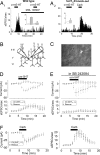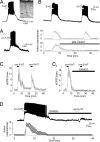Mechanism of the 5-hydroxytryptamine 2A receptor-mediated facilitation of synaptic activity in prefrontal cortex
- PMID: 17535909
- PMCID: PMC1887564
- DOI: 10.1073/pnas.0700436104
Mechanism of the 5-hydroxytryptamine 2A receptor-mediated facilitation of synaptic activity in prefrontal cortex
Abstract
Classic hallucinogens such as lysergic acid diethylamide are thought to elicit their psychotropic actions via serotonin receptors of the 5-hydroxytryptamine 2A subtype (5-HT(2A)R). One likely site for these effects is the prefrontal cortex (PFC). Previous studies have shown that activation of 5-HT(2A)Rs in this region results in a robust increase in spontaneous glutamatergic synaptic activity, and these results have led to the widely held idea that hallucinogens elicit their effect by modulating synaptic transmission within the PFC. Here, we combine cellular and molecular biological approaches, including single-cell 5-HT(2A)Rs inactivation and 5-HT(2A)R rescue over a 5-HT(2A)R knockout genetic background, to distinguish between competing hypotheses accounting for these effects. The results from these experiments do not support the idea that 5-HT(2A)Rs elicit the release of an excitatory retrograde messenger nor that they activate thalamocortical afferents, the two dominant hypotheses. Rather, they suggest that 5-HT(2A)Rs facilitate intrinsic networks within the PFC. Consistent with this idea, we locate a discrete subpopulation of pyramidal cells that is strongly excited by 5-HT(2A)R activation.
Conflict of interest statement
The authors declare no conflict of interest.
Figures





References
Publication types
MeSH terms
Substances
Grants and funding
LinkOut - more resources
Full Text Sources
Miscellaneous

